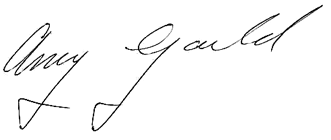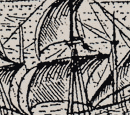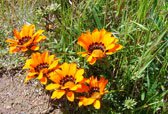imaginemag - arts & culture emagazine | oct / nov 2009 : edition 01
I SAY… and you Say what?
It is with great excitement and trepidation that we launch ImagineMag – the e-magazine for our entertainment and cultural lives. We will cover and give voice to as wide a sector in this community as possible and for that we need your input.
Sometimes through necessity, sometimes through choice many artists work on their own or within a small group. This is not always a bad thing for creativity as one’s own thoughts and ideas are what should be explored and not what everyone else is doing. But whether you work as part of a large organisation or on your own the needs would appear to be very similar. We all need to be seen, heard and experienced. We need to interact both with each other and with the public at large. So talk to us, debate with us, preferably by email.
For many years I have felt myself to be a lone voice crying in the wilderness of the cultural landscape. For me politics and art are very similar in certain aspects for no matter how good or bad you are you will not achieve in either field unless you have a strong power base and sufficient capital to promote your work, ideas or yourself. We only need look around us to see that all that is biggest is not necessarily the best but is often perceived to be because of publicity and promotion that surrounds selected events. As I wrote this I thought of the TV advert that used a Van Gogh painting to advertise it’s product with the catch phrase – in his lifetime he only sold one painting, yet today his paintings sell for millions in anyone’s money. Well I would prefer to see my fellow artists of all descriptions earning reasonable and adequate payment for their work so that they can live healthy and profitable lives and not have to beg for handouts.
After having served for three years on the Cultural Commission to the Western Cape Government on Arts and Culture I noticed that many of the organisations receiving funding were in a similar position. No ‘voice’ and very little marketing leading to very little interest no matter how good the work was. The availability of a reliable source of money can assist in acquiring a ‘voice’ in the various media. However, the overheads involved, in the performing arts in particular, are extensive and often the organizers simply do not have sufficient money to spend on advertising and thereby acquire that `voice.’
In a future edition read our historian’s article on early theatres and how they were run. Everything changes and yet one feels that nothing has changed, not for the Arts.
My feeling is that artists must look at their work and their art in a financial as well as artistic light. It is often implied that artists perform and create out of a calling and a love of their work. I do not deny this but that does not mean they should not be paid in the same way as you would pay for other services or products, yet often this is not the case.
Whilst Art and Culture is taught at schools many schools find resources particularly hard to come by. Our cultural history is an interesting and important part of our lives. It has and always will shape our thinking and the way we live our lives and we should be knowledgeable about it.
Together let us promote, advertise and sell our products and services. There is much that is truly great in our country, tell us and we will help spread the word.
Our initial funding for this magazine, for which we are most grateful, has come from Nedbank and the Arts and Culture Trust. We thank them for the faith they have shown in our magazine by supporting us. However, no amount of funding will make this magazine truly representative unless many people contribute in their different ways already mentioned.

Amy Gould is a Fellow of the Imperial Society of Teachers of Dancing. She is the principal and owner of her full time ballet school, director and choreographer of her dance company Dance Crew, owner/manager of Tokai On-Main a 100-seater intimate theatre and editor in chief of ImagineMag.
01 / art & politics: a universal debate and its south african context
The relationship between art and politics has always been an issue of contention, and often appears as being highly problematic-or at least it is easily problematised-and the context of South African Modernist and Post-modern art history is no exception. Many prominent South African Modernist and contemporary artists, such as William Kentridge, Walter Batiss, Irma Stern,and Gerard Sekoto, have sought to express the political and the aesthetic in the same visual breath, and thus created many strong, iconic and relevant works of art for which they are famous.

But the question is still begged as to what extent does politics or a political agenda have the right to impose itself upon art; in other words, at what point does a work of art become a work of propaganda, and how do we draw a clear line between the two? Is such an endeavor even possible, or are those boundaries so completely blurred that a distinction between, say, a work of art with an explicit political or philosophical and ideological message and an aesthetically pleasing political banner, amount to the pot calling the kettle black?. Read the full story...
02 / art & culture: in the early days of the Cape settlement
IMAGINE! The Cape of Good Hope / Die Kaapse Vlek at its inception in the middle of the seventeenth century.

A rather grim place whose Commander had been given strict instructions that he and his fellow employees of the Dutch East India Company were there primarily to set up a half way house/refreshment station. The purpose was to provide fresh meat and vegetables sufficient to be able to supply and service ships calling at Table Bay, particularly those sailing to and from the Dutch colonies in the East. At the same time as planting a vegetable and fruit garden, they had to build shelters for themselves. Further, a defence system had to be built – against possible warring indigenous people, wild animals and from the personnel of ships of unfriendly nations. In other words this tiny settlement was to be for the financial benefit of the DEIC. Read the full story...
03 / the art in politics:
This will conjure many ideas in many minds and could probably give us endless hours of debate. So your ideas on this subject are not only welcome, but vital.
We have a new president who shows many performance qualities. Particularly in the field of dance and I note and commend with interest his lightness of foot and his crowd pleasing performance. Here in the Western Cape we have a new Premier who also shows signs of a theatrical bent and who appears keen to broaden her dance talents. Let us hope this translates into a genuine and lasting interest in the field of art and that both these very important people, for all of us here in South Africa, were not only using this form of communication for vote gathering but will continue fostering all cultural and art forms. Don’t forget movement and dance were the original forms of communication – long before speech and the written word. Read the full story...
04 / what is art?
According to the Oxford Dictionary, it is producing something beautiful, especially by painting or drawing. Read the full story...
05 / museums: modern relevance
Are museums relevant in today’s world – given that so much information is computer processed? The answer, in my opinion, would be a definite yes. Museums, depending on either their general or their specific interest, allow the visitor to observe, examine (visually through glass or from a suitable/safe distance of the object) and hopefully gain a certain understanding of objects of historical, cultural, scientific or of artistic importance. Read the full story...

06 / the story of ‘Glass Art’
(and a brief history of molten sand)
Glass Art was established in early 2000, by 17 year-old Mandy Lancellas. With an interest in business, a passion for glass and the captivating effects that can be created within it, Mandy was determined to offer a unique finish that over the years has put Glass Art into a niche market. Read the full story...
07 / early history of the cape:
History at the Cape of Good Hope did not start with the arrival of Jan van Riebeeck in Table Bay in 1652, rather the world’s greater knowledge of this part of the world, began when earlier seafarers sailed from Europe exploring unknown areas of the sea as well as seeking a sea route to the East. In this way different nationalities and tribes met each other, often not amicably, but slowly the interior of the African continent unfolded. Read the full story...
08 / armoysan – a strong slave women:
Armoysyn van der Kaap was born in 1661, the daughter of a slave. A baptismal certificate indicates she was baptised in 1687. However not a great deal is known of her very early years although it is thought that her maternal ancestry was either from Angola or Guinea. The word Armoysyn is believed to have been a type of material. Read the full story...
09 / the culture of flowers:

The Culture Of Flowers - an appreciation not only of the beauty of flowers, their stimulation of the intellect, but also the realisation of their monetary value. Today one takes for granted the easy access one has, if interested, to the world of flowers. One can buy them, grow them, learn about them and generally enjoy the beauty at all stages of growth. But when setting up homes at the Cape in the late seventeenth century in a land they did not know, the priorities of the newcomers were a roof over their heads, which would give them a certain comfort and security and to begin cultivating food to put on the table. Read the full story...

10 / choreographing an indigenous sleeping beauty:
and developing an intimate theatre especially for dance
The idea for creating this Indigenous Sleeping Beauty came from a seed that was planted in my mind when we opened our Theatre On-Main three years ago. A guest at the opening performance was so carried away with the possibilities for this intimate theatre that she waxed lyrical over what we had done and what could be done. One of the things she mentioned was that people were looking for something beautiful and magical. Many lives are hard with not much of beauty around them. I listened and thought and three years later this ballet has now become a reality. Read the full story...
11 / curtain up:
When Amy Gould commissioned me to make curtains for her in her private capacity little did either of us realise how interconnected we were to become. During this time we got talking about what I had done and what she was doing and generally just getting to know each other. It was a meeting of the minds and much more. As she unfolded her plans for the creation of her theatre she asked if I could assist in making the curtains. During many more of our meetings and discussions I mentioned how my Granny had been involved with the making of the curtains for the Nico Malan Theatre in Cape Town. Read the full story...
edition. 01 contributors
Larissa Fainberg is a freelance arts and culture writer living in Johannesburg, with a particular interest in the dynamic, up and coming visual arts scene which South Africa has to offer. She has a BA Humanities in History of Art and Philosophy from The University of the Witwatersrand.
Dawn Gould (D Litt et Phil), owns and runs FACTS FOUND an historical research bureau situated in Cape Town, South Africa.
For further details see factsfound.isat.co.za

